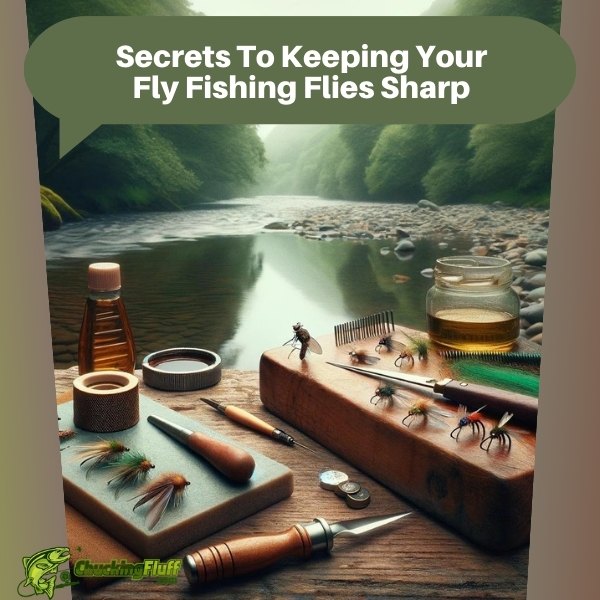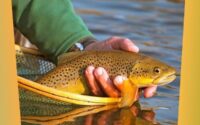| Disclosure: Just to be open and honest the buttons and links you click on in the website will in most cases take you to another website where you can purchase the products I am reviewing. As an Amazon Associate I earn from qualifying purchases. |
Secrets To Keeping Your Fly Fishing Flies Sharp
Quick Post Navigation
- Introduction:
- Understanding Fly Fishing Flies:
- The Importance of Sharpness:
- Factors Affecting Sharpness:
- Methods of Maintaining Sharpness:
- Tools and Techniques:
- Alternative Methods:
- Tips for Longevity:
- Best Practices on the Water:
- Common Mistakes to Avoid:
- Troubleshooting Sharpness Issues:
- Expert Advice and Insights:
- Innovations in Fly Design:
- Environmental Considerations:
- Conclusion:
- FAQs:
- “Check out some of our other Buying Guides”

Introduction:
Fly fishing is not just about the skill of the angler or the quality of the rod and reel. One crucial element often overlooked is the sharpness of the fly fishing flies themselves. Sharp flies are essential for the successful hooking and landing of fish, making them a vital component of any angler’s arsenal. In this guide, we’ll delve into the secrets of keeping your fly fishing flies sharp to ensure your fishing trips are as successful as possible.
Understanding Fly Fishing Flies:
Before diving into the secrets of sharpness, let’s understand what fly fishing flies are. These are artificial lures made to resemble insects or other aquatic creatures that fish feed on. There are various types of flies, including dry flies, wet flies, nymphs, and streamers, each designed to mimic different prey and attract different types of fish.
The Importance of Sharpness:
Sharpness is critical in fly fishing because it directly impacts your ability to hook and land fish. A dull fly is less likely to penetrate a fish’s mouth, resulting in missed strikes and lost opportunities. Additionally, a sharp fly ensures a secure hold on the fish once hooked, reducing the risk of losing it during the fight.
Factors Affecting Sharpness:
Several factors can affect the sharpness of your fly fishing flies. Environmental conditions, such as rocky riverbeds or debris-filled waters, can quickly dull a fly’s hook. Additionally, repeated use can cause wear and tear, further reducing sharpness over time.
Methods of Maintaining Sharpness:
To keep your flies sharp, it’s essential to establish a regular maintenance routine. This includes inspecting your flies before each fishing trip and sharpening them as needed. Proper storage is also crucial to prevent damage, such as bending or rusting, which can dull the hook.
Tools and Techniques:
Sharpening flies requires specific tools and techniques. A good quality hook sharpener or fine-grit whetstone is essential for restoring sharpness. Start by gently filing the hook’s point, taking care not to remove too much material. Repeat this process until the hook regains its sharpness.
Alternative Methods:
In addition to traditional sharpening techniques, some anglers use alternative methods to maintain sharpness. UV light can be used to cure and strengthen flies, making them more resilient to damage. Furthermore, incorporating new materials and technologies into fly construction can enhance sharpness and durability.
Tips for Longevity:
To prolong the life of your fly fishing flies, consider using durable materials for construction. Rotate your flies regularly to distribute wear evenly across your collection. Additionally, avoid exposing flies to excessive heat or moisture, as this can cause them to degrade more quickly.
Best Practices on the Water:
While fishing, handle your flies with care to avoid damage. When changing flies, take care not to bang them against rocks or other hard surfaces. After use, remove any debris and clean your flies thoroughly to maintain their sharpness.
Common Mistakes to Avoid:
One common mistake anglers make is overlooking the importance of sharpness. Neglecting to sharpen flies regularly can result in missed opportunities on the water. Additionally, failing to establish a maintenance routine can lead to dull, ineffective flies.
Troubleshooting Sharpness Issues:
If you notice signs of dullness or damage during a fishing trip, there are quick fixes you can implement to restore sharpness. Carry a hook sharpener or file in your tackle box for on-the-go maintenance. Alternatively, consider carrying spare flies to replace dull ones quickly.
Expert Advice and Insights:
For additional guidance on maintaining sharp flies, seek advice from experienced fly fishers and professional guides. They can offer valuable insights and recommendations based on years of experience on the water.
Innovations in Fly Design:
Advances in fly technology continue to push the boundaries of sharpness and durability. New materials and construction techniques are constantly being developed to improve fly performance. Stay informed about the latest innovations to ensure you’re using the sharpest flies available.
Environmental Considerations:
Finally, consider the environmental impact of your fly fishing practices. Choose sustainable materials and techniques to minimize your footprint on the water. By practicing responsible fly fishing, you can help preserve the health of our aquatic ecosystems for future generations.
Conclusion:
Maintaining sharp fly fishing flies is essential for success on the water. By understanding the factors affecting sharpness and implementing proper maintenance routines, you can ensure your flies are always ready for action. Remember to handle your flies with care and stay informed about the latest innovations in fly design to stay ahead of the curve.
FAQs:
Q: How often should I sharpen my fly fishing flies?
A: It’s best to inspect your flies before each fishing trip and sharpen them as needed.
Q: Can I use regular sharpening tools for fly fishing flies?
A: While traditional sharpening tools can work, it’s best to use a hook sharpener or fine-grit whetstone designed specifically for fly hooks.
Q: How long do fly fishing flies typically last?
A: The lifespan of a fly depends on various factors, including materials used and fishing conditions. With proper care, flies can last multiple fishing seasons.
Q: Can I sharpen flies while on the water?
A: Yes, carrying a hook sharpener or file in your tackle box allows you to sharpen flies on the go if needed.
Q: Are there any environmental concerns associated with fly fishing?
A: Yes, it’s essential to practice responsible fly fishing to minimize the impact on aquatic ecosystems. Choose sustainable materials and techniques to reduce your footprint.


